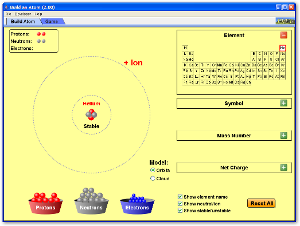I have a YouTube channel. On it, I store recordings of my voice, reading through and explaining the lessons we cover in class. To date, there are 51 of these uploads. In a month, I am going to present with a colleague at a state-wide tech conference about the various tools we use in our middle school science department. YouTube. Screencasting. Glogster. It is flattering, but I am not exactly pleased.
Don't get me wrong. I am excited to travel a bit, to share in front of others who signed up for our "session" and to sound like I have accomplished something in my teaching career. But I am not really very proud of my work. I am dabbling in the "flipped classroom" model by creating the YouTube channel, and by offering a lecture resource online that the students can access at home. But it's still lecture. It's me droning on about storms and air masses and viscosity and plate tectonics.
I am tired of hearing myself talk.
Lately I have been feeling the need to just stop talking altogether. To somehow conduct my daily classes in silence, using only pictures and gestures and the students themselves to teach. (Crazy teaching challenge, perhaps? The kids would love it, I'm sure.)
Today I read an amazing blog article by Susan Eckert (who was actually a guest blogger on one of my favorite teacher-blogger blogs "The Science Teacher"), and it perfectly captures the feeling I have. Her last line is the most telling. "Let our words not distract from their wonderment." (This phrase is now written in big green letters on a Post-It note that hangs from my computer screen.)
Not only do I need to stop talking so much because it tires me and my students, but also (and more importantly) because it hinders and kills their curiosity.
Since when has my major job role been to constantly answer questions and babble on with big words they won't remember five minutes from now? (Mind you, I think answering questions is great. I am the teacher. I have all the answers. At least, that's what my sixth graders think. But it is really not as productive as letting the students discover the answers themselves.) Since when has it been appropriate to fill a room so full of my own words that the students have none left that they feel they can contribute? The self-absorbed nature of my own teaching suddenly hits me. And saddens me.
I want to get rid of my ridiculous Powerpoint notes. I want to redo the screencasts. Make them shorter, more intense, less wordy, and more interesting.
I want to stop talking so much, and start letting the science (the beauty and the mystery of it) speak for itself.
A science teacher's adventures in learning, loving and geeking out in her middle school classroom!
Tuesday, March 20, 2012
Monday, March 5, 2012
Build an Atom!
Click on the simulation below to discover a fun way to reinforce the basics of atomic structure.
This program was created by a team at the University of Colorado at Boulder through a program called "PhET." You can find their website here. Each free simulation (like the one above) can be run online (through their website) or downloaded locally to your computer. Categories of simulations range from biology (membrane channels, molecular motors, etc) to physics (circuits, buoyancy, etc) to chemistry (balancing equations, molarity, etc) and more! The website also includes teacher lesson ideas and downloadable worksheets. This is a wonderful resource!
(Students: At the end of the lesson, click here to take the exit poll!)
This program was created by a team at the University of Colorado at Boulder through a program called "PhET." You can find their website here. Each free simulation (like the one above) can be run online (through their website) or downloaded locally to your computer. Categories of simulations range from biology (membrane channels, molecular motors, etc) to physics (circuits, buoyancy, etc) to chemistry (balancing equations, molarity, etc) and more! The website also includes teacher lesson ideas and downloadable worksheets. This is a wonderful resource!
(Students: At the end of the lesson, click here to take the exit poll!)
Visualizing Scale
Thanks to a wonderful friend of mine, Zero Dean, I recently learned of a fantastic website designed to illustrate the scale of objects in our world. From the tiniest atoms (and parts of atoms) to the largest stars in our universe, this magical little website is truly breath-taking! I've included a screenshot below, but you really must click on the link to truly appreciate it. Be sure the sound is turned up as well. The music is the icing on the cake.
Enjoy!

Enjoy!

Subscribe to:
Posts (Atom)

